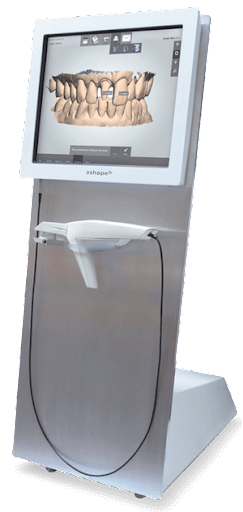Dental implants are a popular and effective solution for replacing missing teeth, and they come in different forms which range from Cemented Implant Crowns & Bridges to Implant-Retained Hybrid Dentures. They are artificial tooth roots made of titanium that are surgically placed into the jawbone. Once the implant is placed, a crown is attached to it to create a natural-looking tooth. While dental implants are a great option for many people, the placement of the implant requires precision and skill to ensure a successful outcome. That is where a surgical guide for dental implant placement comes into play.
This article explains what you need to know about the surgical guide for dental implant placement and some of its advantages over freehand placement.
What is a Surgical Guide for Dental Implant Placement?
A surgical guide for dental implant placement is a tool that is used by dental professionals to help place the implant in the optimal location. It is a customized template that is created based on a 3D image of the patient’s mouth. The surgical guide is designed to fit over the patient’s teeth and guide the placement of the implant.
The surgical guide helps the dentist to place the implant in the right location, angle, and depth. This ensures that the implant is placed in the optimal location for the patient’s anatomy, which can help to reduce the risk of complications and increase the success rate of the implant.
Benefits of Using a Surgical Guide for Dental Implant Placement
Here are some of the benefits of a surgical guide for a dental implant over freehand placement.
- Improved Accuracy
The use of a surgical guide can help to improve the accuracy of implant placement. The guide provides a clear visual reference for the dentist, allowing them to place the implant in the optimal location.
- Reduced Risk of Complications
By using a surgical guide, the risk of complications is reduced. The guide ensures that the implant is placed in the right location, angle, and depth, which can help to reduce the risk of nerve damage, sinus perforation, and other complications.
- Increased Success Rate
The use of a surgical guide can increase the success rate of the implant. By placing the implant in the optimal location, the implant is more likely to integrate with the jawbone and provide a stable foundation for the crown. This greatly can improve the function and aesthetics of the patient’s smile.
- Shorter Procedure Time
The use of a surgical guide can help to shorten the procedure time. The guide provides a clear visual reference for the dentist, which can help to reduce the time it takes to place the implant.
How is a Surgical Guide for Dental Implant Placement Created?
Surgical guide options include tooth-, mucosal- or bone-borne guides — or a combination of these approaches. To create a surgical guide for dental implant placement, the dentist will take a 3D image of the patient’s mouth using a cone beam computed tomography (CBCT) scanner. This image is used to create a virtual model of the patient’s mouth, which is used to design the surgical guide.
The virtual model is created using specialized software, which allows the dentist to design the surgical guide to fit over the patient’s teeth. Once the design is complete, the surgical guide is created using a 3D printer.

